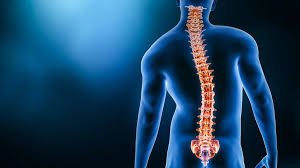Scoliosis Specialist In Pune
Scoliosis Specialist In Pune – Dr. Alok Gadkari
If you’re seeking expert care for Scoliosis Specialist In Pune, Dr. Alok Gadkari stands out as leading specialist in minimally invasive spine surgery. With extensive training and a focus on patient-centered care, Dr. Gadkari offers advanced solutions for individuals suffering from sciatica and other spinal disorders.
If you’re searching for the best Scoliosis Specialist In Pune, look no further than Dr. Alok Gadkari, a highly respected and experienced spine surgeon known for his compassionate care, precision, and commitment to patient recovery. With years of expertise in diagnosing and treating spinal disorders, Dr. Gadkari has earned a reputation as one of Pune’s leading spine specialists.

What is Scoliosis?
Scoliosis involves a sideways curvature of the spine, often resembling an “S” or “C” shape.
- Idiopathic Scoliosis: The most common form, with no identifiable cause, typically emerging during adolescence.
- Congenital Scoliosis: Resulting from spinal abnormalities present at birth.
- Neuromuscular Scoliosis: Associated with neurological or muscular diseases like cerebral palsy or muscular dystrophy.
- Degenerative Scoliosis: Occurs in adults due to spinal degeneration with aging.
Symptoms and Signs
- Uneven shoulders or waist
- One shoulder blade more prominent than the other
- Uneven hips
- Leaning to one side
- Back pain or discomfort
The Role of a Scoliosis Specialist
- Conducting thorough physical examinations
- Ordering and interpreting imaging tests
- Developing individualized treatment plans
- Performing surgical interventions when necessary
- Coordinating multidisciplinary care involving physical therapists, orthotists, and other healthcare providers
Research and Publications
Dr. Gadkari actively contributes to the field of spinal surgery through research. Notably, he co-authored a study on full endoscopic lumbar spine surgery, focusing on clinical safety and the learning curve associated with the procedure.
Diagnosis of Scoliosis
The initial assessment includes a detailed medical history and a physical exam. One common test is the Adams Forward Bend Test, where the patient bends forward, and the specialist observes for any asymmetry or rib hump, indicative of scoliosis.
- X-rays: Determine the degree of spinal curvature using the Cobb angle measurement.
- MRI: Evaluates spinal cord and also detects any underlying conditions.
- CT Scans: Provides detailed images of the spine’s structure.
Treatment Options
In mild curves (<20 degrees), particularly in growing children, it is advisable to have regular check-ups every 6 to 12 months to monitor any progression.
Bracing works in moderate curves (25 to 40 degrees) in growing children and adolescents. It aims to stop further curvature progression.
Types of Braces:
- Boston Brace: A thoraco-lumbo-sacral orthosis (TLSO) that is worn under clothes.
- Milwaukee Brace: Goes from the pelvis to the neck, for higher thoracic curves.
- Braces are usually worn 16-23 hours per day until the child ceases to grow.
Specific exercises can strengthen the muscles that support the spine, improve posture, and reduce pain. Physical therapy does not fix the curvature but makes the spine healthier overall.
Surgery is considered for severe curves (greater than 45-50 degrees) or when scoliosis progresses despite conservative treatment.
- Spinal Fusion: The most common surgical procedure where vertebrae are fused together to correct and stabilize the spine.
- Anterior Vertebral Body Tethering (AVBT): A less invasive option that uses a flexible cord to partially correct the curve while preserving spinal flexibility.
Innovative and Alternative Treatments
LESS is a non-invasive treatment that uses electrical stimulation to strengthen muscles and potentially reduce spinal curvature. Electrodes are placed on the skin over the convex side of the curve, typically used during sleep.
Certain yoga poses, like side planks, have shown promise in reducing spinal curvature in scoliosis patients. A study indicated a 41% reduction in curvature among participants practicing side planks daily over several months.
While chiropractic adjustments can help alleviate back pain and improve mobility, there’s limited evidence supporting its effectiveness in correcting spinal curvature in scoliosis patients.
Importance of Early Detection
Early diagnosis and intervention are vital in managing scoliosis effectively. Regular screenings during childhood and adolescence can lead to timely treatment, preventing progression and reducing the need for invasive procedures.
Choosing the Right Scoliosis Specialist
- Credentials and Experience: Ensure the specialist is board-certified with experience in treating scoliosis.
- Multidisciplinary Approach: A team involving orthopedic surgeons, physical therapists, and orthotists can provide comprehensive care.
- Patient-Centered Care: The specialist should offer personalized treatment plans and involve patients in decision-making.
Book an Appointment with Dr. Alok Gadkari
If you are experiencing neck pain, back pain, or any spine-related issues, do not ignore the symptoms. Early diagnosis and the right treatment can prevent long-term complications. Schedule a consultation with Dr. Alok Gadkari, the best spine specialist in Pune, and take the first step towards a pain-free life.
📲 Call now or book online for a detailed consultation.
